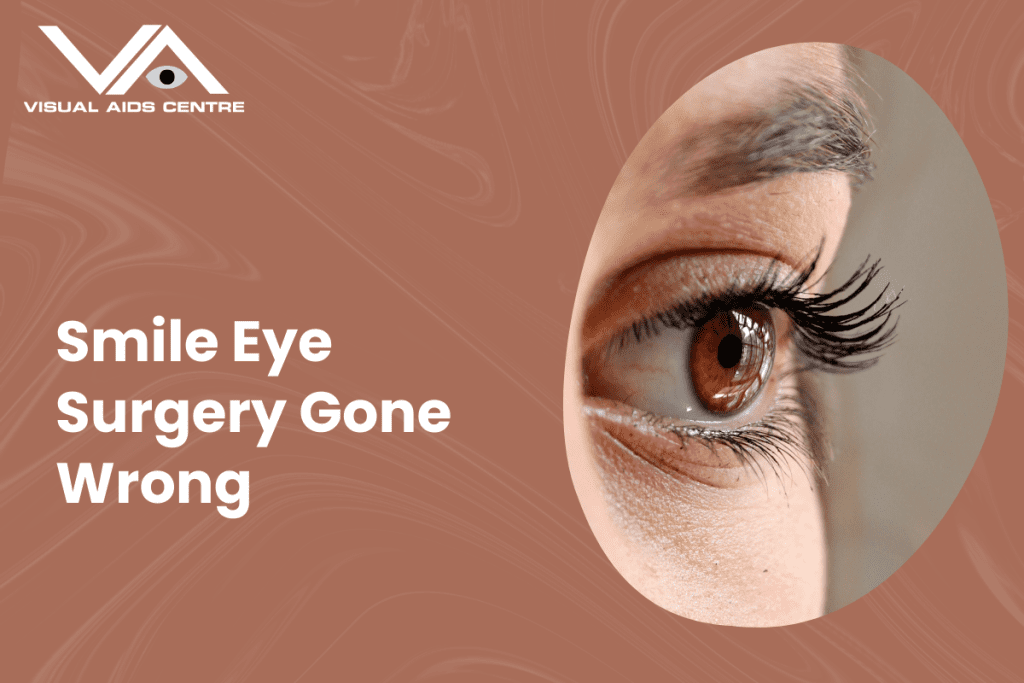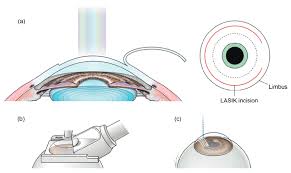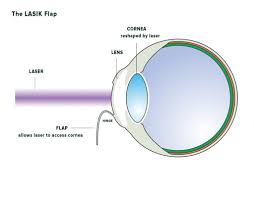Table of Contents
ToggleSmile eye surgery, a groundbreaking procedure aimed at correcting vision issues and eliminating the need for glasses and contacts, has gained immense popularity due to its minimally invasive approach and speedy recovery. Millions of individuals have already embraced this transformative solution. While generally safe, like any medical intervention, there may be instances where unforeseen complications arise.
In this article, we will explore the intricacies of smile eye surgery gone wrong, providing readers with a comprehensive understanding of the potential risks, underlying causes, and preventive measures. By equipping you with this knowledge, we aim to empower you to make well-informed decisions before embarking on this life-altering procedure.

Understanding Smile Eye Surgery
Smile eye surgery, also known as Small Incision Lenticule Extraction, is a type of laser eye surgery that aims to correct nearsightedness (myopia) with or without astigmatism by reshaping the cornea. This procedure involves creating a small incision to remove a lenticule of corneal tissue, resulting in improved vision without relying on traditional methods such as LASIK.
While the majority of patients achieve successful outcomes, there are instances where complications may arise, potentially affecting the overall effectiveness of the surgery.
Common Complications
- Visual Disturbances:
One of the most reported complications of smile eye surgery gone wrong is visual disturbances, which can have a significant impact on a patient’s quality of life. These disturbances may manifest as glare, halos, double vision (diplopia), or difficulty seeing in low-light conditions. While these issues typically fade over time, they can be bothersome for some individuals.
- Dry Eyes:
Temporary dry eyes are a common side effect following laser eye surgeries, including smile eye surgery. However, in certain cases, patients may experience severe and prolonged dryness, resulting in discomfort, irritation, redness, and potential corneal damage. Symptoms such as stinging, burning, and grittiness can be distressing. This concern is particularly relevant for individuals with pre-existing dry eye conditions. To mitigate this complication, diligent management is necessary to prevent long-term consequences. Patients with severe symptoms may benefit from considering punctal plugs or the application of low-concentration topical cyclosporine. - Overcorrection or Undercorrection and Regression:
Attaining the ideal correction is paramount in any vision correction surgery. However, smile eye surgery can sometimes lead to either overcorrection, resulting in farsightedness, or undercorrection, leaving residual nearsightedness. These errors may necessitate supplementary procedures or compromise the expected outcomes. Patients must wait until their vision stabilizes before considering enhancement surgery to refine their vision correction. - Corneal Haze:
Although rare, another potential complication that may arise is the development of corneal haze. Corneal haze refers to the clouding of the cornea, which can negatively impact visual clarity. This condition is more commonly observed in patients with higher degrees of myopia. Addressing corneal haze can pose a challenge and may necessitate additional interventions in severe cases. - Epithelial Ingrowth:
Skin cells growing into the lenticule cavity can lead to discomfort, pain, and blurry vision. Factors such as tears in the incision or side cut, rupture of the cap, irregular tears with excessive dissection, and diabetes can potentially increase the risk of developing epithelial ingrowth after undergoing the smile procedure. This rare complication typically requires surgical removal. It is usually treated by irrigating the interface and removing the epithelial ingrowth using a blunt spatula and micro vitreoretinal forceps, followed by suturing of the incision. - Infection:
While bacterial infections are uncommon, they may require prompt antibiotic treatment if symptoms such as redness, itching, pain, or discharge arise. Following postoperative care guidelines, including the use of antibiotic eye drops and avoiding situations that may increase the risk of infection, is crucial for patients. - Regression
In certain instances, regression may manifest years later despite the initial success of treatment. Consequently, additional procedures, such as follow-up treatments or enhancements, may be required to effectively address any subsequent changes or complications that may have arisen.
Causes of Smile Eye Surgery Complications
- Inadequate Patient Screening and Concealing Medical History:
Thorough patient screening is vital to identify individuals with pre-existing conditions that may heighten the risk of complications. Inadequate screening may lead to unforeseen issues during or after the surgery. Moreover, when patients conceal their medical history, it increases the likelihood of complications. - Surgeon Inexperience:
The experience and skill of the surgeon play a significant role in the success of any surgical procedure. Inexperienced surgeons may be more prone to errors, leading to complications that could have been avoided with a more skilled practitioner. - Equipment Malfunctions:
Smile eye surgery relies on cutting-edge laser technology, and equipment malfunctions can have severe consequences. Regular maintenance and adherence to safety protocols are crucial to prevent technical issues during surgery. - Other Causes:
Complications can also arise due to improper healing, aging, dry eye syndrome, thin corneas, and autoimmune diseases. These factors increase the risk of potential issues and should be considered for optimal eye health.
Preventive Measures
- Thorough Preoperative Evaluation and Open Discussion:
In order to minimize the potential for complications, patients are required to undergo a thorough preoperative evaluation. This evaluation encompasses a comprehensive assessment of overall eye health, identification of any pre-existing conditions, and ensuring that the patient is a suitable candidate for smile eye surgery. Additionally, it is important that patient must have a clear understanding of their individual risk factors and engage in open discussions regarding their medical history. - Choose an Experienced Surgeon:
Choosing a skilled and experienced surgeon is crucial for the success of any eye surgery. Patients should diligently research and select a surgeon with a proven track record of successful smile eye surgeries. Also, don’t hesitate to ask the surgeon comprehensive questions regarding their experience with smile procedures and their strategies for managing complications. - Strict Adherence to Safety Protocols:
During surgery, surgeons and medical personnel must strictly follow safety protocols and guidelines. This encompasses meticulous equipment sterilization, accurate laser calibration, and maintaining a surgically sterile environment. - Navigating the Aftermath:
If you encounter any issues following smile surgery, it is crucial to promptly reach out to your surgeon. Early intervention plays a vital role in effectively managing complications and minimizing any long-term impact. Depending on the specific problem, your doctor may prescribe medications, perform additional procedures, or suggest alternative options for vision correction. Remember, you are not alone on this journey. Joining patient support groups or communities can provide invaluable emotional support and practical advice from others who have undergone a similar experience. - The Road to Recovery:
Fortunately, many complications that may arise from smile surgery are manageable. Vision problems can often be corrected through additional laser procedures. Dry eye can be effectively treated with medication and lubricating drops. Furthermore, most temporary issues tend to be resolved with time and proper care. However, it is important to acknowledge the significant psychological impact that vision problems can have. Adapting to the possibility of permanently altered vision requires emotional resilience and ongoing communication with your doctor and support network.
Conclusion
While smile eye surgery has indeed revolutionized the field of vision correction, it is of utmost importance for patients to be well-informed about the potential risks and complications associated with the procedure. Navigating these challenges requires resilience and support, as well as a realistic understanding of the recovery process.
Rather than rushing into a decision, it is advisable to explore all available options for vision correction. Through staying informed and proactive, patients have the power to make informed decisions regarding their eye health. This active participation contributes to the overall success of the surgery, transforming the prospect of “Smile” surgery into a transformative journey towards achieving a clearer vision and a heightened sense of confidence.













